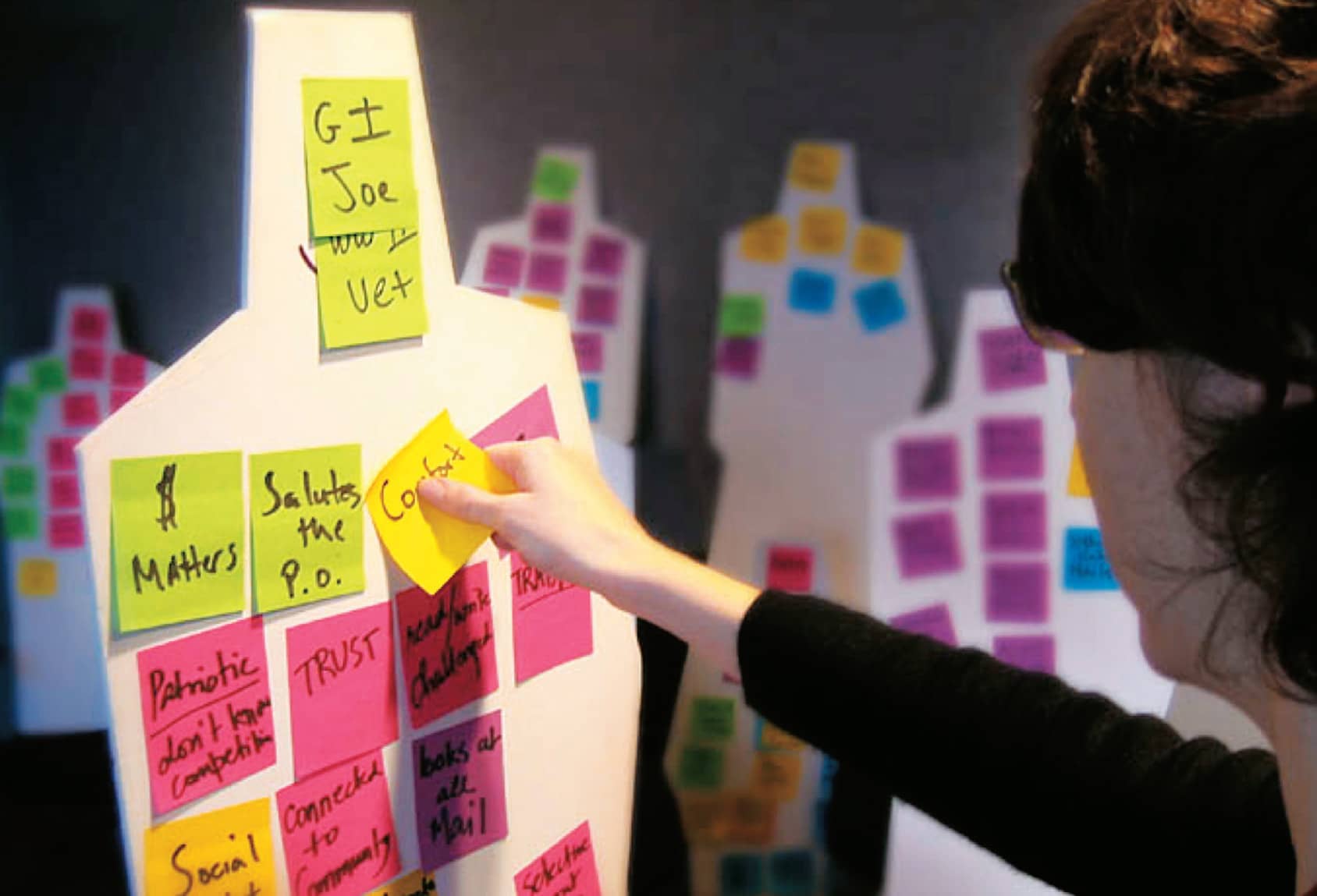SYNTHESIS / ANALYSIS TECHNIQUE • RESEARCH DELIVERABLE
63 Personas

Personas consolidate archetypal descriptions of user behavior patterns into representative profiles, to humanize design focus, test scenarios, and aid design communication.1
For user-centered design, you need to understand people. However, attempting to design for everyone results in unfocused or incoherent solutions, so some level of consolidation is needed. Surveys and quantitative methods tend to result in abstracted and dehumanized caricatures. Traditional market segments don’t work because they describe demographic populations rather than aggregates of behavior. Crafted from information collected from real users through sound field research, personas provide an ideal solution by capturing common behaviors in meaningful and relatable profiles.2 Their human description facilitates easy empathy and communication, while their distinctions create useful design targets for responsible design.
Once you have enough information collected to describe several users, look for behavior patterns and themes that constitute commonalities. To arrive at consolidated descriptions, it may be useful to employ affinity diagramming or similar methods. The similarities across users can then be clustered to begin forming synthesized, aggregate archetypes. Personas should be limited in number, for example, three to five for any given project, to maintain a manageable design focus and avoid targeting extreme outliers.
Personas are typically presented in page-length or shorter descriptions, providing a name for the person, a photograph (use stock photography to avoid connection to a real identity) or sketch, and a narrative story describing in detail key aspects of his or her life situation, goals, and behaviors relevant to the design inquiry. Supplementary images may be used to add a compelling impression of the persona lifestyle, including typical spaces, objects, and activities. Personas are then used as a lasting human reference by teams throughout all phases of the project. They are helpful in developing, discussing, and presenting product or system design in the definition and ideation phase. They are also used to check scenarios of use, highlighting positive experiences and potential breakpoints. In addition to personas being a useful working tool within the design team (including distributed teams), personas provide a persuasive human reference when communicating research summaries and scenarios to clients.
1. The seminal text that first introduced personas to the world of interaction design is:
Cooper, Alan. The Inmates Are Running the Asylum: Why High-Tech Products Drive Us Crazy and How to Restore the Sanity. Indianapolis, IN: Sams—Pearson Education, 2004.
Personas originated from Alan Cooper’s need to synthesize and communicate design research, for software development. Cooper first utilized actual project managers and IT managers he met as loose models of users for whom he would target design. The method later evolved into fictional personas based on distinct behavior patterns that emerged from interviews. Each persona captured important differences in goals, tasks, and skill levels. From:
Cooper, Alan. “The Origin of Personas,” August 2003, www.cooper.com/journal/2003/08/the_origin_of_personas.html
2. Personas may be entirely fictionalized, but this is not recommended unless part of an intentional approach. For example, Gaver et. al. propose a method of “design for extreme characters” (the drug dealer, the fictitious Pope) with exaggerated emotional attitudes, to expand creative possibilities in considering the aesthetics of interaction design. See:
Djajadiningrat, J., W. Gaver, and J. Frens. “Interaction Relabelling and Extreme Characters: Methods for Exploring Aesthetic Interactions.” Proceedings of Designing Interactive Systems DIS ’00, ACM, 2000: 66–71.
Further Reading
Goodwin, Kim. Designing for the Digital Age: How to Create Human-Centered Products and Services. Indianapolis, IN: Wiley, 2009.

Persona development using affinity diagramming from field research for a customer-centered project on the library experience.
Courtesy of MAYA Design

Persona of a college student. The majority of information about the persona is visually illustrated to reflect her knowledge, activities and interests, influencers, and backstory.
Courtesy of Todd Zaki Warfel, Principal Designer, messagefirst | design studio
